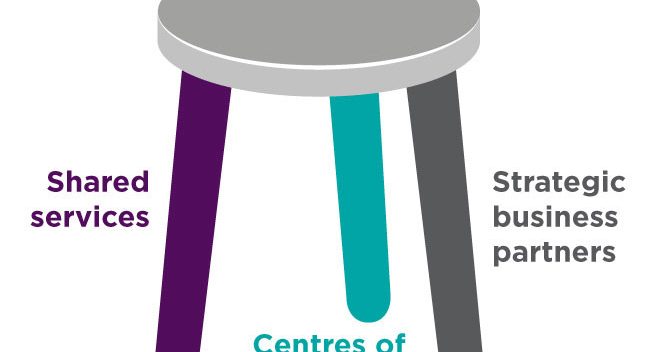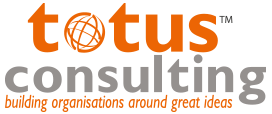
- June 10, 2022
- 4 Minute to read
- Articles & Blogs
Is HR’s Tripod Structure Working?
For years now, many hr leaders have been busy implementing what is popularly referred to as the tripod structure for their hr functions – the three legged stool consisting of shared services , centers of excellence and business partners.
In theory, three legs are supposed to be neat and provide a lot of stability. but the problem is that business does not want a wooden stool to sit but an adaptive and organic function that works and deliver results.
Thanks to our research efforts for our book #hrhereandnow, we have been talking to several hr leaders and teams and one uncomfortable truth that we got in touch with is this – the so called tripod hr structure looks neat but is not always working and delivering results.
Why the famous tripod structure is not working
1. Power and context: while on paper there are coes and partners who are expected to do their bit, the reality is that there is a baggage, a legacy and history to bear in mind. there are power centres to deal with. if the businesses or functions within the organisation are federal in nature, it is quite likely that the hr business partners will align strongly with the businesses and business leaders and call the shots and the so called centres of excellence will feel marginalized. in other words, the front will drive the back.
On the other hand, if the organisation has a centralized structure or power is centralized at head office, it is quite likely that the coes will call the shots and the hr business partners will see themselves as merely deploying corporate initiatives. in other words, when the back drives the front, the situation is the reverse.
Power and influence becomes much more potent than the structure on paper.
2. Tenure: hr teams experience a fair amount of churn. they also grow and hire new people. also, hr functions rely a lot on history. as a result, irrespective of the structure, much depends on who has been there long enough, who knows most of the senior business and functional leaders, who can get things done for whom and who has a successful track record and is therefore well regarded. such a person could be an hr business partner or in a coe or be running shared services but business will go to that person all the time. sometimes such a person could be in the largest factory or the biggest business division or the most profitable entity or has the greatest trouble shooting abilities. the person might determine the structure.
3. Goal alignment, competition: hr teams often have the greatest trouble collaborating. while they are busy propagating team work, they have trouble working as a team. for one, they are in specialized and fragmented roles. they also have goals and kras that force them to do what will make them look good or earn their bonuses rather than contribute to the business or help the function as a whole. sometimes, the goals of one person might not be aligned to that of another. an l&d person might have goals to run a certain number of programs but the hr business partner might push back because businesses is having a busy season. a business partner may be under pressure to come up with a policy or program to solve a local problem but the coe may find it unacceptable.
4. Shared services may not be world class: an important precondition for coes and hr business partner roles to succeed is that shared services as a function will take away all the transactional work and drive not just efficiency but also service excellence. it was assumed that shared services will liberate these individuals from intervening to make processes work. unfortunately, we have ended up positioning shared services as the place for the weakest or as the least glamorous function. hr may also not invest in technology or automation and as a result both coes and partners are embarrassed about the fact that we continue to deal with problems in full and final settlement or faulty on-boarding.
The way out
It would be too simplistic for me to suggest that all tripods structures should be disbanded and replaced with something else. much depends on the nature of the business, its size, maturity, quality of the team, business priorities, cost considerations and so on.
Having said so, a few general pointers are worth offering:
HR leadership maturity: irrespective of the structure, hr leaders within the organisation at a certain level and above must transcend structures and worry about the business and organisation as a whole. there must be every effort to ensure that all leaders in hr have shared leadership for shaping the function. they must also role model openness, trust and collaboration.
Internal mobility: diversity of experiences makes people a lot more open and appreciative of one another. hr leaders must ensure that their team members keep moving within and we do not bring up silly excuses about past experiences or specialist knowledge to prevent mobility. only mobility will foster collaboration.
Matching competencies with roles: the tripod structure assumes that the incumbents have competencies that befit the roles they are playing. hr business partners need strong partnering competencies, they need hr planning abilities, they need to have internal consulting abilities. similarly, those in coes need to have specialist abilities relevant to their work, be it organisation development or learning or talent management.
From silos to processes: for ages, businesses have been reinventing their functional roles to build them around value adding processes rather than remain silos. hr has an urgent need to do the same. rather than organize roles around functional specializations, hr may need to organize roles around value adding hr processes.
In my mind, the hr tripod can at best be a dynamic framework to organize hr resources and competencies to meet business needs and not a structure that imprisons us and prevents value addition.

Leave a Reply